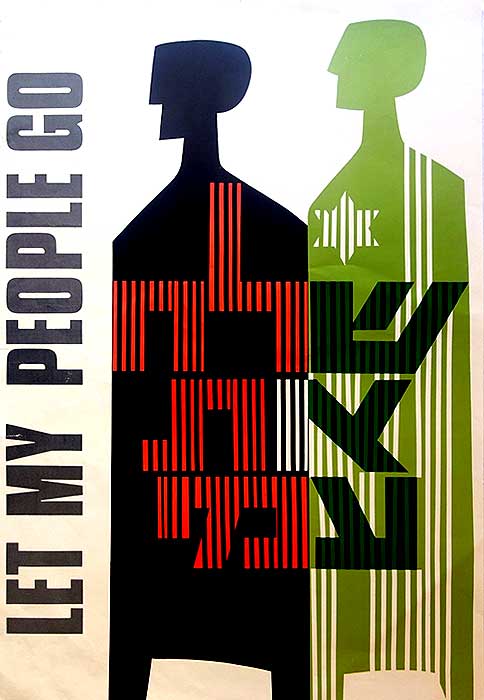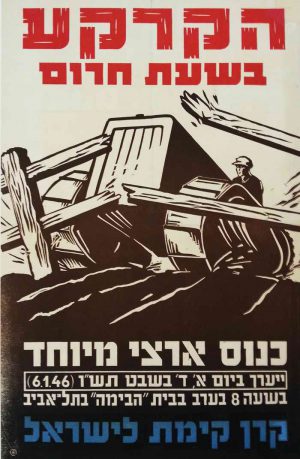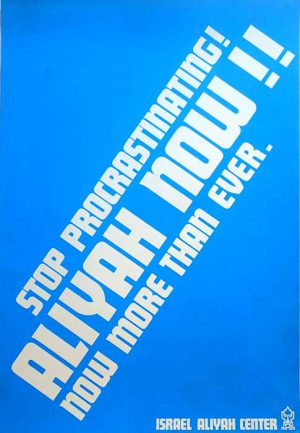Shop
VINTAGE ISRAEL POSTER JEWISH SOVIET REFUSENIKS LET MY PEOPLE GO 1977
$2,250.00
1 in stock
Description
Vintage Israeli Poster of AliyahVINTAGE ISRAEL POSTER JEWISH SOVIET REFUSENIKS “LET MY PEOPLE GO” 1977 A campaign from the Ministry of Aliyah and Immigrant Absorption together with the Jewish Agency to bring New Immigrants to Israel
Aliyah and Integration Center Vintage Israeli Poster 1977.“VINTAGE ISRAEL POSTER JEWISH SOVIET REFUSENIKS LET MY PEOPLE GO 1977″ . Printed by the Ministry of Immigrant Absorption 1977 The Ministry of Immigrant Absorption of Israel (Hebrew: המשרד לקליטת העלייה, HaMisrad LiKlitat HaAliyah), known until 1951 as the Ministry of Immigration (Hebrew: משרד העלייה, Misrad HaAliya), a ministry in the Israeli government. In co-ordination with local authorities and the Jewish Agency, the Ministry is responsible for new immigrants (olim) for three weeks after they arrive. It helps the olim find employment and accommodation and gives advice on education, planning and social issues, as well as setting up the “immigrant basket” of benefits (such as tax breaks, grants etc.).#Jewish#Aliyah#Aliya#jew#Hebrew#Paris#New York##NATAN#SHERANSKY#Olim#SOVIET#USSR#IDA#NUDELאסיר ציון#Refusenik (Russian: отказник, otkaznik, from “отказ”, otkaz “refusal”) was an unofficial term for individuals, typically but not exclusively Soviet Jews, who were denied permission to emigrate by the authorities of the former Soviet Union and other countries of the Eastern bloc. The term refusenik is derived from the “refusal” handed down to a prospective emigrant from the Soviet authorities. In addition to the Jews, broader categories included: Other ethnicities, such as Volga Germans attempting to leave for Germany, Armenians wanting to join their diaspora, and Greeks forcibly removed by Stalin from Crimea and other southern lands to Siberia. Members of persecuted religious groups, such as the Ukrainian Greek-Catholic Church, Baptists and other Protestant groups, Russian Mennonites, and Jehovah’s Witnesses.A typical pretext to deny emigration was the real and alleged association with state secrets.Applying for an exit visa was a step noted by the KGB, so that future career prospects, always uncertain for Soviet Jews, could be impaired.[2] As a rule, Soviet dissidents and refuseniks were fired from their workplaces and denied employment according to their major specialty. As a result, they had to find a menial job, such as a street sweeper, or face imprisonment on charges of social parasitism. The ban on Jewish immigration to Israel was lifted in 1971 leading to the 1970s Soviet Union aliyah. The coming to power of Mikhail Gorbachev in the Soviet Union in the mid-1980s, and his policies of glasnost and perestroika, as well as a desire for better relations with the West, led to major changes, and most refuseniks were allowed to emigrate. Over time, “refusenik” has entered colloquial English for a person who refuses to do something, especially by way of protest.
מרבית מאסירי ציון נכלאו בשל פעילותם במדינות הגוש הקומוניסטי ובברית המועצות לשעבר. על פי ההשקפה הקומוניסטית, כל השתייכות דתית או אתנית בטלה מפני ההשתייכות לאומה הקומוניסטית, ולפיכך סירבו שלטונות ברית המועצות להכיר בשאיפות הלאומיות של היהודים. בתגובה, פעלו חלק ממסורבי העלייה באופן הפגנתי ומחתרתי נגד העיכובים, וייסדו מחתרת של פעילות ציונית. הם נעצרו ונכלאו על ידי המשטר, לעתים בתואנות שווא, וחלקם הוגלה למקומות נידחים בברית המועצות. כמה מאסירי ציון סבלו מעינויים במהלך מעצרם. בשנת 1970, למשל, נרשמו 44 מקרים של יהודים פעילי עלייה שנשלחו למחנות עבודה בכפייה. היו גם מקרים של אסירי ציון שנפטרו בעודם בכלא. אחרים הושמו בבתי חולים פסיכיאטריים תחת אבחנות רפואיות כוזבות, והטיפולים בהם עוררו לעתים מחלות נפש.
Additional Information
| Artist / Creator | |
|---|---|
| Technique | |
| Condition | |
| Size | 98×68 cm ~ 39×27 inch |
| A |


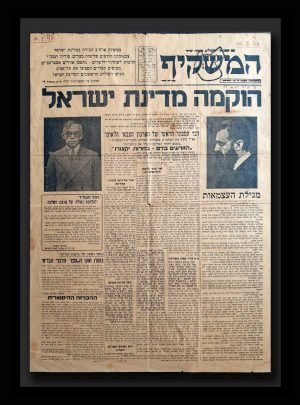 Rare Israeli Newspaper Declaration of Independence!, 1948 Jabotinsky & Herzl
Rare Israeli Newspaper Declaration of Independence!, 1948 Jabotinsky & Herzl
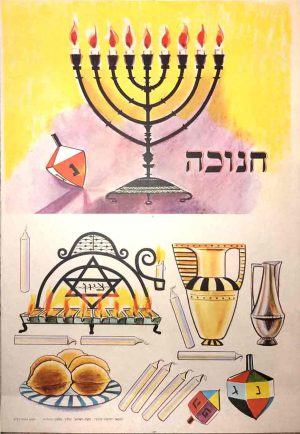 Hanukkah Educational Children Vintage Israeli Poster, Hebrew, 1960s
Hanukkah Educational Children Vintage Israeli Poster, Hebrew, 1960s
 Test
Test
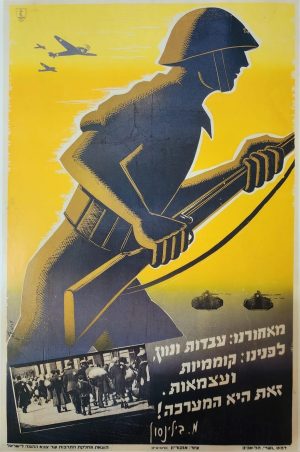 Extremely Rare vintage poster From Holocaust to Revival – The Israeli War of Independence 1948
Extremely Rare vintage poster From Holocaust to Revival – The Israeli War of Independence 1948
